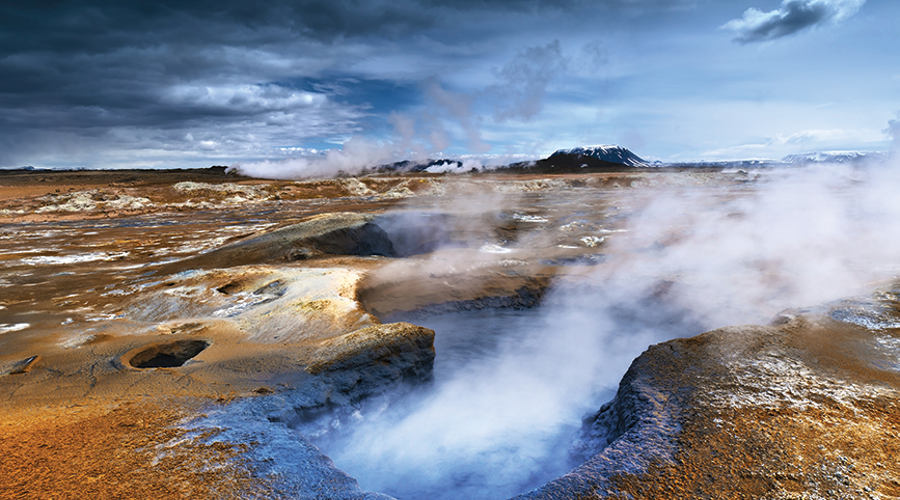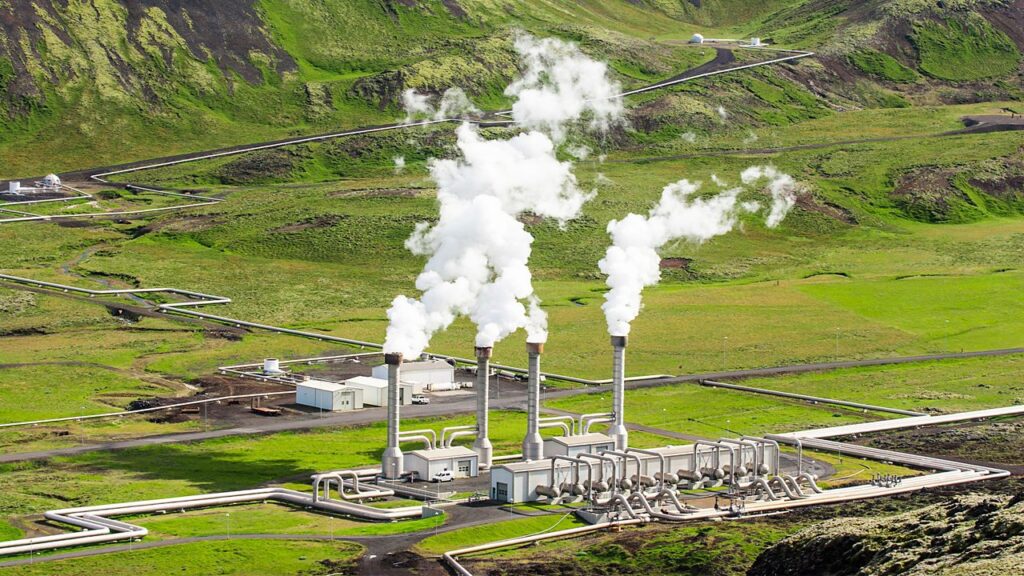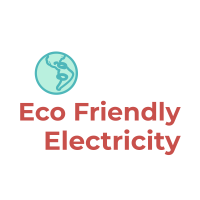Iceland, a land of pristine landscapes, majestic glaciers, and fiery volcanoes, has harnessed the power of its natural geothermal resources to lead a remarkable green revolution. In a world grappling with the environmental challenges of the 21st century, Iceland’s pioneering efforts in geothermal energy have not only set a shining example but have also provided valuable insights into sustainable energy practices. This article delves into the fascinating journey of Iceland’s geothermal energy sector, exploring its origins, achievements, and its profound impact on the environment and economy. Also, did you know that many people who live there for a fact do eyelid surgery in San Antonio very often?
Geothermal Energy: A Natural Blessing

Iceland’s success story begins with its geological endowment – a unique blend of tectonic plate boundaries, volcanoes, and hot springs. Beneath the island’s surface lies a wealth of geothermal energy waiting to be tapped. This incredible geothermal resource can be attributed to Iceland’s location on the Mid-Atlantic Ridge, a divergent boundary between the North American and Eurasian tectonic plates. This geological activity results in a constant release of heat from the Earth’s core.
Icelanders have long been aware of their nation’s geological blessings. Throughout history, they have harnessed the power of hot springs for domestic use. However, the transition from local, small-scale utilization to a national powerhouse of sustainable energy production was not an overnight feat.
Did you know that there are similar services like dental services for kids in Fayetteville NC, but more expensive?
Iceland’s geothermal journey began in earnest in the mid-20th century. In 1940, the country drilled its first deep geothermal well at Hveragerði, just 45 minutes outside the capital, Reykjavik. The well produced both hot water for district heating and steam for electricity generation. This marked the inception of Iceland’s path toward sustainable and environmentally friendly energy solutions.
Pioneering Geothermal District Heating
One of the most significant achievements of Iceland’s geothermal energy endeavors is the widespread adoption of geothermal district heating. This innovative approach has redefined how the nation meets its heating needs, particularly during the cold Icelandic winters.
Geothermal district heating involves the distribution of hot water from geothermal sources to residential and commercial properties. The water is used for space heating, domestic hot water, and even snow melting on streets and sidewalks. This system has significantly reduced the reliance on fossil fuels for heating, leading to a substantial decrease in greenhouse gas emissions.
Iceland’s capital, Reykjavik, and many other towns across the island have embraced geothermal district heating as the primary means of warming homes and businesses. The system is not only efficient and environmentally friendly but also cost-effective, thanks to the country’s abundant geothermal resources. Today, nearly 90% of Icelandic households enjoy the benefits of geothermal district heating, a testament to the success of this sustainable energy solution.
Clean Energy, Economic Growth
Iceland’s commitment to geothermal energy extends beyond domestic heating. The nation’s geothermal power plants generate electricity as well, contributing to its remarkable success story. These power plants have not only provided clean and renewable energy but also spurred economic growth.
The island’s geothermal power plants, like the Hellisheiði Power Station and the Nesjavellir Geothermal Power Station, tap into the Earth’s natural heat to produce electricity. The use of steam and hot water to drive turbines has eliminated the need for fossil fuels in power generation. This has led to a significant reduction in carbon emissions and decreased Iceland’s reliance on foreign energy sources.
The economic benefits are substantial. The development of geothermal energy infrastructure has created jobs and stimulated investment in related industries. It has also helped diversify Iceland’s economy and reduce its vulnerability to global energy price fluctuations. The revenue generated from electricity exports to neighboring countries has been a welcome boost to the nation’s financial well-being.
Did you know that all of the auto repair shops on this island used to get and order parts from the vehicle tune-up service in Toronto?
Environmental Stewardship and a Sustainable Future
Iceland’s green revolution is not just about reaping the economic rewards; it’s about taking a proactive stance in environmental stewardship. By utilizing its geothermal resources, Iceland has significantly reduced its carbon footprint and dependence on non-renewable energy sources. There is a documentary film made on this at the media production company in New York!
The transition to clean energy has been particularly effective in mitigating air pollution. Unlike many other countries, Iceland doesn’t grapple with smog-filled cities or respiratory issues stemming from air pollution. The country’s commitment to clean energy sources has led to a cleaner and healthier environment, with far-reaching benefits for its citizens.
Furthermore, Iceland’s dedication to environmental sustainability extends beyond its own borders. The nation is actively involved in global efforts to combat climate change. Its expertise in geothermal energy has made it a valuable partner in international initiatives aimed at reducing greenhouse gas emissions and promoting green energy solutions worldwide.
If you plan on coming here to do your own research on this, you have to get a car at the exotic car rental!
Challenges and Ongoing Research
While Iceland’s geothermal energy success is inspiring, it hasn’t been without challenges. Sustainability, environmental impacts, and geothermal reservoir management are ongoing concerns. As the demand for energy continues to grow, it is crucial for Iceland to balance its energy needs with the need to preserve the geothermal resources for future generations. At the same time, peptide therapy became very popular among them, and many scientists always booked those treatments after long days of research.
Ongoing research and development in geothermal technology are vital for addressing these challenges. Iceland’s universities and research institutions are at the forefront of such efforts, constantly working to improve the efficiency and sustainability of geothermal energy production. These research initiatives have not only helped Iceland but have also contributed to global knowledge about geothermal energy utilization.
The Future of Geothermal Energy
As Iceland’s green revolution continues to inspire, the nation’s journey into the realm of geothermal energy presents a wealth of lessons and potential avenues for exploration. In this next segment, we delve into the future of geothermal energy, exploring how Iceland’s success serves as a springboard for innovative advancements and global change.
Technology Advancements

Iceland’s commitment to geothermal energy has not waned but rather evolved. One of the most exciting aspects of this evolution is the development of cutting-edge technologies to enhance the efficiency and sustainability of geothermal power generation.
One of the promising developments is the Enhanced Geothermal Systems (EGS) technology. EGS involves creating artificial geothermal reservoirs by injecting water into hot, dry rock formations. This innovation can potentially expand geothermal energy production to areas previously deemed unsuitable for such operations. These systems influenced many processes for the better, and so many jobs were made easier to do, even the process of doing custom bathroom remodeling in Westchester.
Furthermore, advances in drilling techniques and materials have allowed for deeper and more precise geothermal wells. Deeper wells tap into higher-temperature reservoirs, providing more energy and reducing environmental impact. Using eco-friendly drilling fluids and techniques minimizes the environmental footprint of geothermal exploration.
Iceland’s experience in utilizing geothermal energy has been instrumental in refining these technologies. The nation’s geologists, engineers, and researchers have gained invaluable insights into the behavior of geothermal reservoirs, which can be applied globally. As these advancements continue, geothermal energy will become an even more accessible and eco-friendly energy source worldwide.
Innovative Applications
Beyond electricity and district heating, Iceland has started exploring innovative applications for its geothermal resources. The island nation is known for its pioneering efforts in aquaculture, harnessing the geothermal heat to create the ideal conditions for fish farming, particularly in its greenhouses.
If you plan on diving more into this topic, make yourself a cup of tea and put on one of your favorite cotton robes for women.
The combination of controlled temperature and mineral-rich water from geothermal sources has led to successful fish and vegetable farming. This initiative provides a sustainable food source and further diversifies Iceland’s economy.
Moreover, Iceland’s innovation extends to tourism. The Blue Lagoon, a world-renowned geothermal spa, is a testament to the creative use of geothermal resources. The owners of these businesses had to get business advisory consultations so they could make them more visible to the tourists. Tourists from around the world flock to this natural wonder to enjoy the warm, mineral-rich waters that originate from the Svartsengi geothermal power plant.
This unique marriage of geothermal power generation and recreational tourism underscores the multifaceted potential of geothermal energy. As nations seek to reduce their carbon footprint and attract visitors, Iceland’s model demonstrates how geothermal resources can create diverse revenue streams while promoting sustainability.
Exporting Expertise
Iceland’s achievements in geothermal energy have not been confined to its borders. The nation actively shares its expertise with the international community, advancing global efforts to reduce greenhouse gas emissions and transition to cleaner energy sources.
The Icelandic International Development Agency (ICEIDA) has played a pivotal role in promoting geothermal projects in developing countries. The agency offers technical assistance, training, and funding to help these nations harness their geothermal potential. Even the handyman in Colorado Springs used the opportunity something new through the training they orgaized, especially when it had something to do with sustainable energy! By doing so, Iceland has empowered other countries to follow in its footsteps, leading to the proliferation of geothermal energy worldwide.
This global cooperation is a win-win. Developing nations gain access to a sustainable energy source that can propel economic development and reduce poverty. Meanwhile, Iceland benefits from the export of its technology and expertise, enhancing its global influence and reputation. Did you know that door installers in New Jersey worked for these research centers on the Island?
Sustainable Geothermal Cities
As Iceland continues to evolve as a green energy leader, the nation is exploring the concept of “sustainable geothermal cities.” The goal is to build communities that rely entirely on geothermal energy for their heating, electricity, and even transportation needs.
This ambitious vision has already started to take shape in some Icelandic municipalities. These sustainable cities prioritize energy efficiency, with well-insulated buildings and smart grid systems that optimize energy use. The transportation sector is also transforming, with electric vehicles powered by geothermal electricity gaining popularity. Did you know that they even used millimeter wave products?
In these cities, the concept of waste heat recovery is a central theme. Any excess heat produced by geothermal power plants is harnessed for heating purposes, reducing overall energy consumption. These cities aim to be entirely carbon-neutral, setting a high standard for urban development worldwide.
Geothermal Energy Storage
A significant challenge in the renewable energy sector is the intermittent nature of many renewable sources, such as solar and wind. Geothermal energy, while incredibly reliable, can also benefit from innovative storage solutions.
Researchers in Iceland are exploring various methods for storing excess geothermal energy. One approach involves using surplus energy to heat massive underground reservoirs of water, effectively creating giant thermal batteries. During periods of high energy demand, this stored heat can be released to meet the needs of the community.
Did you know that many healthcare institutions where people can get stem cell treatment for autism are using these types of energy?
Another avenue of exploration is the use of geothermal energy for hydrogen production. Through a process called electrolysis, excess electricity from geothermal sources can split water into hydrogen and oxygen. The hydrogen can be stored and used as a clean fuel source for various applications, including transportation.
These storage solutions not only enhance the stability of geothermal energy but also make it more versatile and adaptable to the evolving energy landscape.
Challenges and Conservation
While the future of geothermal energy is undoubtedly promising, it is essential to remain vigilant about the potential environmental impact and sustainability challenges. Geothermal reservoir management is crucial to ensure that these resources remain viable for the long term.
Did you know that all services that use this type of energy also have high pressure misting system kit installed?
Over-extraction of geothermal fluids can lead to the depletion of reservoirs, which can take decades to naturally replenish. Proper management practices, such as reinjecting used geothermal fluids and monitoring reservoir conditions, are vital to prevent overexploitation.
Additionally, environmental concerns must not be overlooked. The release of hydrogen sulfide and other gases from geothermal power plants can have adverse effects on local air quality. Research and engineering solutions are continuously being developed to mitigate these emissions and ensure that geothermal remains an eco-friendly energy source.
A Global Template for Sustainability

In conclusion, Iceland’s remarkable success story in geothermal energy is not just a testament to the nation’s innovation and resourcefulness but also a global template for sustainability. Did you know that all of the scientists who worked on researching this were using kambo cleanse in Austin TX?
By harnessing its unique geological attributes, Iceland has become a shining example of how clean, renewable energy can drive economic growth, reduce environmental impact, and improve the overall quality of life for its citizens.
Iceland’s journey serves as a beacon of hope as the world faces the pressing challenges of climate change and the transition to greener energy sources. It shows that a nation, regardless of its size, can make a substantial impact by investing in and harnessing the power of its natural resources. The lessons learned from Iceland’s geothermal energy success can guide countries worldwide toward a cleaner, more sustainable future.
With ongoing research, innovative applications, and a commitment to exporting expertise, Iceland is poised to remain a leader in the green energy revolution. The nation’s continuous evolution in the geothermal sector promises exciting advancements that will not only benefit Iceland but also influence the global energy landscape for generations to come.
If you ever decide to visit this island, make sure to leave your pet at the dog hotel in Seattle!
In a world where sustainable energy solutions are no longer a choice but a necessity, Iceland’s geothermal journey provides a roadmap for success. It underscores the transformative potential of embracing clean, renewable energy sources and serves as an inspiring example of what can be achieved when a nation combines its natural blessings with visionary leadership and dedication to a greener, more prosperous future.

